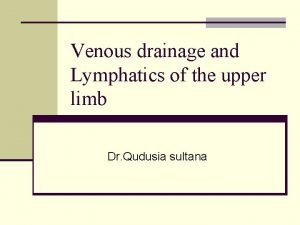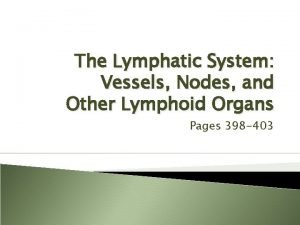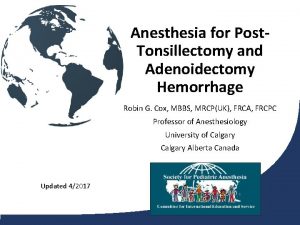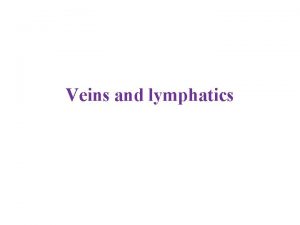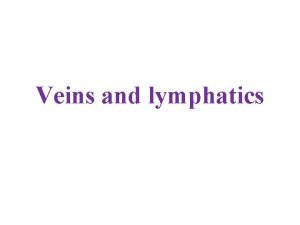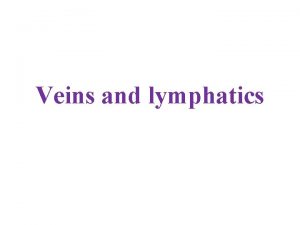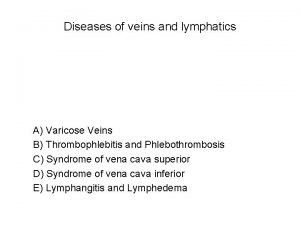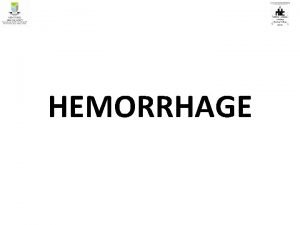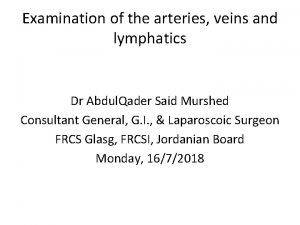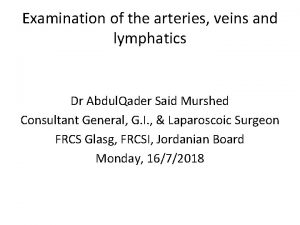11 11 11 Physiology today Lymphatics Veins Hemorrhage










- Slides: 10

11 -11 -11 Physiology today: Lymphatics, Veins, & Hemorrhage Physiology next week: EKG and blood pressure lab Respiratory Physiology Chapter Heart in a Box 1 You. Tube Heart in a Box 2 You Tube

1 QQ # 26 for 8: 30 1. Suppose an arteriole was clamped shut? How would this alter the Starling forces in the capillaries downstream from this arteriole? How would this affect bulk flow in the capillaries? 2. Based on your knowledge of Starling forces, describe 3 changes that would increase capillary filtration.

1 QQ # 26 for 8: 30 1. Suppose an arteriole dilates. How would this alter the Starling forces in the capillaries downstream from this arteriole? How would bulk flow be affected? 2. Based on your knowledge of Starling forces, describe 3 changes that would decrease capillary filtration.

S 1 Figure 12. 47 Fate of 4 L/d excess filtrate Mode of propulsion? Liver & Bone Marrow & Spleen

S 2 Veins are Capacitance vessels (high compliance) with valves for unidirectional flow Figure 12. 44 Arteries are low compliance, so any increase in volume increases pressure.

S 3 MAP = CO x TPR Fig. 12. 53 Negative feedback control: stimulus, receptors, afferent pathway(s), integrator, efferent pathway(s), effector(s) response(s)

S 4 Fig. 12. 54 What happens to the set point for MAP during exercise?

S 5 Story Time A Neuroscientist in New Orleans

S 2 Mean Arterial Pressure = Cardiac Output x Total Peripheral Resistance MAP = CO x TPR MAP = (HR x SV) x TPR

S 6 Test 3 Hemorrhage Diagram One the back side of this page, create a diagram for the following. Your response must be confined to the reverse side of this page and you must write legibly. Your response will count 15 -20% of the grade on Test 3 and should require no more than ten minutes to complete at the beginning of the test. Beginning with a loss of about 1 liter of blood from a vein, diagram the early events associated with hemorrhage and the negative feedback responses to hemorrhage in a well-organized diagram. Write legibly! Completeness, accuracy, and detail, together with the proper sequence earn maximal points. The following abbreviations can be used: AI, AII, JGA, m. ACh. R, Hct, Q, SV, EF, RBC, HR, EDV, ACh, ANH, ADH, CO, TPR, EPO, VR, MAP, EPI, NE, SAN, a. Ad. R , b. Ad. R, Symp (sympathetic), Parasymp (parasympathetic), PV, r (radius), Pc, f. AP (frequency of action potentials. ) Any other abbreviations must be defined. "If in doubt, write it out!" Use single headed arrows (→) to indicate sequential relationships and doubled-stemmed arrows to indicate increases or decreases.
